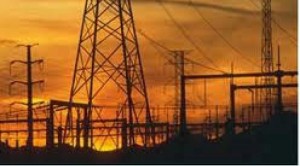
But just the same, NGCP appealed to citizens to use electricity wisely and act responsibly toward power facilities such as transmission towers to prevent disrupting power supply.
“The supply will be tight, but NGCP will be ready to transmit whatever power is available to the grid,” NGCP spokesperson Cynthia D. Perez-Alabanza said in a telephone interview.
“Right now it looks like there is no imminent outage. As long as there are no unusual scenarios where several major plants have outages at the same time we should be ok.”
While the power situation in Mindanao has vastly improved, some places still experience rotational brownouts of up to five hours.
According to NGCP’s latest data, the highest peak demand this year is forecast at 8,654MW in the month of May. The highest actual peak demand last year was 8,305MW. Also during this month, demand will peak in Visayas at 1,554MW and in Mindanao at 1,400MW.
Alabanza declined to specify which plants will be on maintenance shutdown and forced outage due to market confidentiality issues. Data from NGCP shows only that in Luzon, three power plants will be on scheduled shutdown and one is set to be on forced outage during this period from March to May.
In the Visayas, two will be on scheduled shutdown and one on forced outage. The high voltage direct current (HVDC) line linking Luzon (Naga City) and Visayas (Leyte island) will be shut down for maintenance on April 9-21 because the facility’s housing valve hall at the HVDC station will be reinforced. Even with this maintenance work, NGCP assured the public that the grid was secure and able to handle the load. Back-up lines are fully operational and ready to deliver available power from the generators.
In Mindanao, one power plant is scheduled to be shut down and two will be on forced outage during the summer months.
Alabanza said NGCP is confident that that its transmission facilities—transmission towers, lines, and substations—can efficiently transmit available power to the grid.
To mitigate grid issues related to summer, NGCP said in a statement, the company conducted early in the year an audit of substation equipment and transmission lines all over the country. Since February, major lines and equipment have been inspected and scanned for defects or abnormalities, which were subsequently evaluated and corrected, NGCP said.
NGCP’s Reliability and Technical Assessment Department will continue to conduct a technical audit of facilities throughout the year to assist in the operation and maintenance of power transmission equipment.
“These efforts are part of NGCP’s commitment to implement transmission projects that will improve the reliability of the grid,” Alabanza said.
Also in preparation for the summer, NGCP urged the public to mind the risks of breaching right-of-way (ROW) clearances near transmission lines and towers, and appealed to citizens to act responsibly.
“Transmission line-related accidents usually occur during the summer season because this is when the public, especially the children on vacation, fly kites. Grass fires also usually occur during summer. We are reminding the public to be careful to avoid accidents,” Alabanza said.
NGCP’s lines carry very high voltage power. Violating safety clearance will affect not just NGCP’s operations but also public safety.
“Electrocution, accidents, and line trippings or interruptions are all damaging to NGCP, the victims, and ultimately, the electricity consumers. We ask for the public’s cooperation to help lessen, if not eliminate, transmission line-related accidents in the future,” Alabanza said.
NGCP is a privately-owned corporation that operates and manages the country’s transmission superhighway. Although it does not own and operate power-generating plants and local distribution utilities, NGCP said it remains in constant communication with generators and distribution utilities all over the country as it transmits electricity to bulk power users.
RELATED STORIES
Gov’t ‘exerting maximum efforts’ to prevent brownouts – Palace